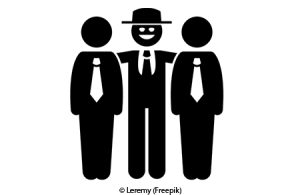Let’s Talk Parity – What is the boys’ club effect?
Let’s Talk Parity is a series of short articles on concepts relating to parity that the INSP’s Equality-Parity referents have decided to set up.
Part 3 : What is the boys’ club effect?
 The boys’ club originated in the gentlemen’s clubs of 18th-century England. By extension, it refers to a network, often unconscious (“when ten men have to choose the eleventh, they tend to choose a man” [1]), informal, largely or exclusively male. Its members are socially homogeneous and help each other in their professional field by using their influence. It is synonymous with peer support, networking, and co-optation.
The boys’ club originated in the gentlemen’s clubs of 18th-century England. By extension, it refers to a network, often unconscious (“when ten men have to choose the eleventh, they tend to choose a man” [1]), informal, largely or exclusively male. Its members are socially homogeneous and help each other in their professional field by using their influence. It is synonymous with peer support, networking, and co-optation.
As in most professional environments, the boys club effect exists in university and research, where leadership positions are mainly held by men. It therefore has an impact on the difficulties women scientists face in accessing positions of responsibility.
The boys club effect also influences the transmission of information, which tends to circulate only within the group. In our laboratories, this information may concern a deadline for registering for a conference, a job opening, an award, or a call for proposals to which to apply for.
Be careful not to communicate important information verbally only, as women are more likely to work part-time or remotely. To disseminate information, favor emails, team meetings, and posting notices in high-traffic areas rather than discussions at the coffee machine or in the corridor.
[1] extrait de « Masculinités et carrières académiques » Enquête OMéGARS, projet mené dans le cadre d’une collaboration entre l’association Femmes & Sciences, le CNRS Occitanie Ouest, l’Université Toulouse 3 – Paul Sabatier et l’Université Toulouse 2 – Jean Jaurès
Author: Catherine Schwob – Professor at Sorbonne University – Gender Equality Officer at INSP.

